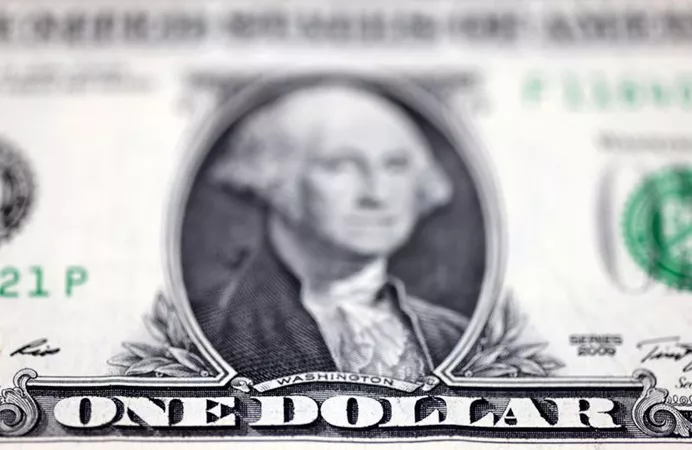The U.S. dollar remained steady against the euro on Monday after a challenging week saw it fall to a three-year low. Some technical indicators now suggest that the dollar is oversold.
The greenback also weakened against the yen, as President Donald Trump’s unpredictable tariff policies eroded confidence in the U.S. dollar. The dollar’s decoupling from U.S. Treasury yields— which rose last week despite the dollar’s decline—has fueled concerns that investors may be pulling capital out of the U.S. due to fears over the long-term impact of trade policies.
“The policy-making is so chaotic that it’s tough to predict where rates or the economy might head next,” said Adam Button, chief currency analyst at ForexLive. “The uncertainty is now at an intolerable level for businesses in international trade, and the real question is how quickly this will affect the U.S. consumer,” he added.
The Trump administration’s tariffs are putting pressure on the U.S. economy, and Federal Reserve Governor Christopher Waller suggested on Monday that the Fed may be forced to cut interest rates to prevent a recession—even if inflation remains high.
In March, U.S. consumers’ expectations for inflation surged to their highest level since autumn 2023, driven by concerns about personal finances and job prospects, according to a report from the New York Fed.
The euro remained mostly unchanged at $1.1359, having reached $1.1473 on Friday—the highest level since February 2022.
The dollar also weakened against the Japanese yen, dropping 0.39% to 142.93. On Friday, the dollar had hit 142.05, its lowest point since September.
Bilal Hafeez, CEO at Macro Hive, pointed out that the dollar’s sharp decline over the past week was a rare four-standard-deviation move. “Typically, this would suggest a rebound, but if we’re seeing a structural shift, similar to the breakdown of Bretton Woods in the 1970s, then anything is possible,” Hafeez said.
Trump announced on Sunday that he would unveil a new tariff rate on imported semiconductors within the week. However, he suggested some flexibility for companies in that sector.
On Friday, the White House exempted smartphones, computers, and certain electronics—largely imported from China—from heavy tariffs. However, U.S. Commerce Secretary Howard Lutnick warned that these products would soon face additional duties, alongside semiconductors, in the next two months.
“Markets are reacting to the uncertainty, which has only been exacerbated by conflicting statements from the U.S. administration,” said Nick Rees, head of macro research at Monex Europe. “This uncertainty is pushing the dollar lower as investors seek safer alternatives outside the U.S.”
Trump also hinted at potential exemptions for auto-related tariffs, further fueling market volatility.
Meanwhile, Japanese Prime Minister Shigeru Ishiba stated that Japan would not rush to strike a deal in upcoming tariff talks with the U.S. Japanese Economy Minister Ryosei Akazawa also confirmed that any foreign exchange issues would be handled through bilateral discussions between Japanese and U.S. officials.
The dollar lost 0.18% against the Swiss franc, trading at 0.814 francs, while the British pound gained 0.88%, reaching $1.3195.
The Australian dollar climbed 0.84% to $0.6338, extending its 4% rally from last week.
Elsewhere, the offshore yuan dropped 0.35% to 7.307 per dollar, following last week’s record low due to escalating tensions between the U.S. and China. March data showed that China’s exports surged as factories rushed to ship goods before new U.S. tariffs were imposed.
In cryptocurrency news, Bitcoin rose 1.90% to $85,066.
Related Topics:


